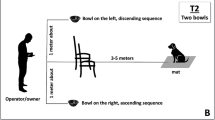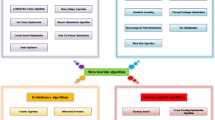Abstract
Music expresses thoughts and emotions in artistic form and is made up of different components including harmony, rhythm, and melody. Several musical elements are tied together during the songwriting process in order to generate melodies that are harmonic. A music melody is the essential element of any music to generate strong feelings from listeners and capture their interest. In the process of music appreciation, melody controls the emotional changes of music. It is an efficiently perceived part and the tone of a song. In recent years, Sichuan unvoiced music has developed rapidly and attracted much attention. This paper selects Sichuan unvoiced music as the main research theme and constructs a melody generation algorithm by utilizing the state-of-the-art techniques of deep learning (DL) and evolutionary algorithms (EAs) such as recurrent neural network-long short-term memory (RNN-LSTM) and genetic algorithm (GA). Firstly, this paper briefly describes the concept of DL algorithms, the deep generation model, and sequence to sequence model, as they constitute the technological foundation for this research. Secondly, this paper proposes a melody generation algorithm that utilizes RNN-LSTM for melody generation and GA for melody optimization. More specifically, the melody is generated by preprocessing data, creating, and training the RNN-LSTM model. A GA was used to determine the melodic fitness function for eight songs as the fitness function directly affects the selected termination condition. The fitness function can be thought of as either a person or an evolutionary rule. Finally, the average score of these songs, before and after evolution, is calculated, which demonstrates that the analysis and rotation creation methods are more precise and that the song’s average melody score is higher. The method proposed in this study has been thoroughly compared to the existing approaches proposed in earlier studies, and it was found that the approach we propose is more effective in terms of accuracy and the average melody score.












Similar content being viewed by others
Data availability
The datasets used and/or analyzed during the current study are available from the corresponding author on reasonable request.
References
Ali M, Yin B, Kumar A, Sheikh AM et al. (2020) Reduction of multiplications in convolutional neural networks. In: 2020 39th Chinese Control Conference (CCC) (pp. 7406–7411). IEEE. https://doi.org/10.23919/CCC50068.2020.9188843
Aslam MS (2020) Co-design method for H∞ control of quantized TS fuzzy system over the networked system. J Intell Fuzzy Syst 39(1):771–788
Bai Y, Qi L, Tie Y (2020) Music generation based on reinforcement learning actor-critic. Comput Appli Softw 37(5):118–122
Cao H (2022) Entrepreneurship education-infiltrated computer-aided instruction system for college music majors using convolutional neural network. Front Psychol 13:900195
Chen Z (2019) Observer-based dissipative output feedback control for network T-S fuzzy systems under time delays with mismatch premise. Nonlinear Dyn 95:2923–2941
Chen G, Chen P, Huang W, Zhai J (2022) Continuance intention mechanism of middle school student users on online learning platform based on qualitative comparative analysis method. Math Probl Eng 2022:1–12
Cheng L, Yin F, Theodoridis S, Chatzis S, Chang T-H (2022) Rethinking Bayesian learning for data analysis: the art of prior and inference in sparsity-aware modeling. IEEE Signal Process Mag 39:18–52
Clay A, Couture N, Decarsin E, Desainte-Catherine M, Vulliard PH, Larralde J (2012) Movement to emotions to music: using whole body emotional expression as an interaction for electronic music generation. In: New Interfaces for Musical Expression
Dai X, Hou J, Li Q, Ullah R, Ni Z, Liu Y (2020) Reliable control design for composite-driven scheme based on delay networked T-S fuzzy system. Int J Robust Nonlinear Control 30(4):1622–1642
Hastuti K, Andono PN, Shidik GF, Noersasongko E, Syarif AM (2020) Gamelan composer: a rule-based interactive melody generator for Gamelan music. Int J Eng Appl (IREA) 8(4):148–157
Hazrat B, Yin B, Kumar A, Ali M, Zhang J, Yao J (2023) Jerk-bounded trajectory planning for rotary flexible joint manipulator: an experimental approach. Soft Comput 27(7):4029–4039. https://doi.org/10.1007/s00500-023-07923-5
Johnson CG, Cardalda JJR (2002) Genetic algorithms in visual art and music. Leonardo 35(2):175–184
Katoch S, Chauhan SS, Kumar V (2021) A review on genetic algorithm: past, present, and future. Multimed Tools Appl 80:8091–8126
Kereliuk C, Sturm BL, Larsen J (2015) Deep learning and music adversaries. IEEE Trans Multimed 17:2059–2071
Kumar A, Shaikh AM, Li Y et al (2021) Pruning filters with L1-norm and capped L1-norm for CNN compression. Appl Intell 51:1152–1160. https://doi.org/10.1007/s10489-020-01894-y
Lam M (2020) The physicality of music production: investigating the roles of mindful practice and kinesthetic learning. Music Educ J 106(3):23–28
Li Q, Hou J (2021) Fault detection for asynchronous T-S fuzzy networked Markov jump systems with new event-triggered scheme. IET Control Theory Appl 15(11):1461–1473
Li Y, Zhang Z, Ding H, Chang L (2023) Music genre classification based on fusing audio and lyric information. Multimed Tools Appl 82(13):20157–20176
Liu Y, Wang K, Liu L, Lan H, Lin L (2022) Tcgl: Temporal contrastive graph for self-supervised video representation learning. IEEE Trans Image Process 31:1978–1993
Lu S, Liu M, Yin L, Yin Z, Liu X, Zheng W (2023) The multi-modal fusion in visual question answering: a review of attention mechanisms. PeerJ Comput Sci 9:e1400
Mesoudi A (2010) The experimental study of cultural innovation. Innovation in cultural systems: contributions from evolutionary anthropology, pp.175–91
Miao BC, Guo WA, Wang L (2019) A polyphony music generation system based on latent features and a recurrent neural network. CAAI Trans Intell Syst 14(1):158–164
Misra NN, Dixit Y, Al-Mallahi A, Bhullar MS, Upadhyay R, Martynenko A (2020) IoT, big data, and artificial intelligence in agriculture and food industry. IEEE Internet Things J 9(9):6305–6324
Shih Y-J, Wu S-L, Zalkow F, Muller M, Yang YH (2022) Theme transformer: Symbolic music generation with theme-conditioned transformer. IEEE Trans Multimed. https://doi.org/10.1109/TMM.2022.3161851
Siddavatam I, Dalvi A, Gupta D, Farooqui Z, Chouhan M (2020) Multi genre music classification and conversion system. Int J Info Eng Electron Bus 12(1):30–36
Tsushima H, Nakamura E, Yoshii K (2020) Bayesian melody harmonization based on a tree-structured generative model of chord sequences and melodies. IEEE/ACM Trans Audio Speech Lang Process. https://doi.org/10.1109/TASLP.2020.2996088
Wang L, Zhai Q, Yin B et al. (2019) Second-order convolutional network for crowd counting, Proc. SPIE 11198, Fourth International Workshop on Pattern Recognition, 111980T https://doi.org/10.1117/12.2540362.
Wang Q, Su F, Wang Y (2020) Hierarchical attentive deep neural networks for semantic music annotation through multiple music representations. Int J Multimed Info Retr 9:3–16
Wen YW, Ting CK (2022) Recent advances of computational intelligence techniques for composing music. IEEE Trans EmergTopics Comput Intell. https://doi.org/10.1109/TETCI.2022.3221126
Xiang Y (2018) Folk culture: the cornerstone of Chinese culture’s influence. Int Commun Chin Cult 5:301–304
Xu H, Sun Z, Cao Y et al (2023) A data-driven approach for intrusion and anomaly detection using automated machine learning for the internet of things. Soft Comput. https://doi.org/10.1007/s00500-023-09037-4
Yang X (2021) Research on automatic composition based on multiple machine learning models. In: 2021 3rd International Conference on Artificial Intelligence and Advanced Manufacture (pp. 1206–1209)
Yang Y, Welch G (2023) A systematic literature review of Chinese music education studies during 2007 to 2019. Int J Music Educ 41(2):175–198
Yao W, Guo Y, Wu Y, Guo J (2017) Experimental validation of fuzzy PID control of flexible joint system in presence of uncertainties. In: 2017 36th Chinese Control Conference (CCC) (pp. 4192–4197). IEEE. https://doi.org/10.23919/ChiCC.2017.8028015
Yin B, Khan J, Wang L, Zhang J, Kumar A (2019) Real-time lane detection and tracking for advanced driver assistance systems. In: 2019 Chinese Control Conference (CCC) (pp. 6772–6777). IEEE. https://doi.org/10.23919/ChiCC.2019.8866334
Yin B, Aslam MS et al (2023) A practical study of active disturbance rejection control for rotary flexible joint robot manipulator. Soft Comput 27:4987–5001. https://doi.org/10.1007/s00500-023-08026-x
Funding
This study was funded by the Research on the Influencing Factors and Optimization Strategies of Cooperative Protection and Development of Bayu National Folk music (BYMY22B03). This paper does not receive any funding.
Author information
Authors and Affiliations
Corresponding author
Ethics declarations
Conflict of interest
The authors have not disclosed any competing interests.
Additional information
Publisher's Note
Springer Nature remains neutral with regard to jurisdictional claims in published maps and institutional affiliations.
Rights and permissions
Springer Nature or its licensor (e.g. a society or other partner) holds exclusive rights to this article under a publishing agreement with the author(s) or other rightsholder(s); author self-archiving of the accepted manuscript version of this article is solely governed by the terms of such publishing agreement and applicable law.
About this article
Cite this article
Dong, L. Using deep learning and genetic algorithms for melody generation and optimization in music. Soft Comput 27, 17419–17433 (2023). https://doi.org/10.1007/s00500-023-09135-3
Accepted:
Published:
Issue Date:
DOI: https://doi.org/10.1007/s00500-023-09135-3




